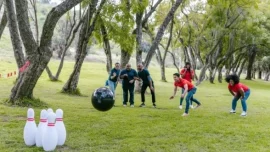So, what does it take to be effective working from home? And why are some people more effective in the office. Read on to find out.
What are the traits of WFH personnel?
Knowing the behaviors of successful remote workers is the very first step in the new human capital process. Let’s simulate a WFH employee’s typical day. Many people prefer audio calls to video conferences, so they don’t have to take the pain of dressing up for the calls. And this means that they are working alone without the limelight with nearly zero human touch (apart from family). In consequence, they toil as the hours pile on. Furthermore, because we are not accustomed to staring at a video screen for long hours (no, binge-watching OTT shows does not count), such a working pattern necessitates additional concentration and discipline. All of this implies that the ideal WFH employee is someone who can work independently, away from the spotlight, with minimal praise for their efforts, and has focus, concentration, discipline, and the willingness to persevere.
At this stage, we began deploying Discover to our clients to stabilize their WFH regime. First, we identified the axes along which such traits fall using DISC-based psychometric assessment tests. The analyses established that a low “I” (Influence) score was the key determinant. What this meant was that the WFH search revolved around employees who can work alone, away from people, have immense focus (if they have patience), handle tons of data, and prefer operating behind the scenes.
A pronounced question that emerged was what happens to folks who have a high “I”? Well, they indeed would be among the first to return to the office when it reopens because their need to be around people surpasses their WFH tendencies.
Some of our clients had a unique concern: their employees were never “self-reliant” enough to work without supervision. As a result, we began examining the “C” (Compliance) scores to observe whether this made a difference, which it did. Because they were not independent, those with high “C” scores required more instructions and regular feedback than those with low “C” scores. The C axis, however, is secondary to the “I” axis.
These insights enabled us to assist our clients in navigating this high learning curve with ease. For instance, we knew which of their employees had the highest chance of working productively from home and which needed to be in the office. Additionally, once the global workforce returns to work, HR managers will have more information to help them streamline their staff. They will be better equipped with knowledge about cognitive ability tests, the difference between percentage and percentile, problem-solving interview questions, types of psychometric tests, and much more.
And all this was made possible with Discover Assessments, the only gamified DISC assessment platform across the globe.






